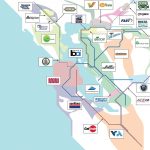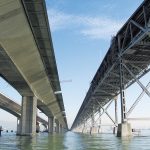
Michael Adamson. Photo by Melvin Kneip.
Around the end of 2019, a friend and I hiked the Skyline-to-Sea trail. The trail begins in Castle Rock State Park (where I spent many weekends in high school learning to rock climb), meanders along a ridgeline of the Santa Cruz mountains, descends into the heart of Big Basin Redwoods State Park, and finishes at Waddell Creek Beach on Highway 1. While hiking through Big Basin’s old growth redwoods, I was struck by the quiet grandness of the forest. The trees were massive, but beneath their canopy the forest was quiet, a near complete stillness only interrupted by the sound of a stream descending through the tree roots on its way to the sea. It seemed timeless, as though the forest had remained in that same state for centuries, and would for centuries more.
A few weeks later, my friend left the Bay Area for a job in Maryland. A few months after that, the California State Parks closed because of the COVID-19 pandemic. And in August of last year, wildfire ripped through Big Basin, destroying the park facilities and leaving the fate of the old growth forest in doubt.
The last half-decade of environmental reporting in California has taught me that change is not an inevitable, occasional occurrence — it is the natural state of things. Our charge isn’t to resist it, reverse it, or control its speed. One might as well stop an earthquake by laying duct tape across the San Andreas Fault. Rather, I see our relationship to this changing planet as one of negotiating transitions, of building bridges from one reality to the next.
The pace of change can be difficult for a publication like the Bay Area Monitor to keep up with. Climate change science evolves almost as quickly as an edition can be published. The entire country’s understanding of social justice can be turned on its head in the time it takes to write an essay on the subject. A global pandemic can radically alter the economic landscape, change how we read, what we read, and the media in which we read it.
The Monitor has a prestigious history as a print publication carved by the hard work of its reporters and editorial staff, as well as the loyalty and passion of its readership. That won’t change as the publication moves away from print. What it looks like as we transition to a digital-only product remains to be seen, but I can say that quality of journalism and commitment to informing the Bay Area will be the foundations of this era-spanning bridge.
The Big Basin old growths survived the fire. Does that forest now hold the perfect silence I walked through almost two years ago? I can’t say for certain as the trail is still closed, but I suspect that I would find only a fleeting resemblance there. That previous stillness was an anomaly; by forcing transition, the wildfire was the more natural state of things. And the true heart of the forest is whatever remains to connect the new reality to the last.
I look forward to sharing my passion for nature, for the Bay Area, and for honest journalism as we reshape the Monitor online. And to you, the reader, I promise that the heart of this forest will remain recognizable.
Michael Adamson is the incoming editor of the Monitor.

